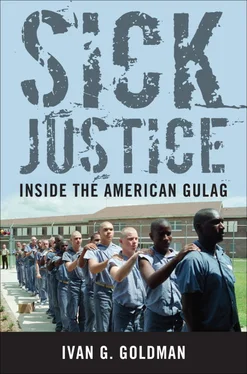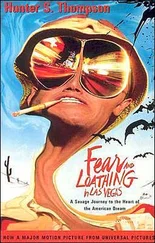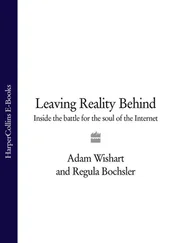Terry Nelson, a LEAP board member and former Border Patrol agent, jumped to Gonzalez’s defense. “There’s no doubt that the so-called war on drugs is a gigantic failure and that it causes violence, hurts our economy and forces dedicated law enforcers to risk their lives in the line of fire for a lost cause,” he said. Agents like Gonzalez who put their lives on the line, he added, should have the right “to exercise the First Amendment and share their views on policies that impact them on a daily basis.” 40
Gonzalez’s case is reminiscent of Hans Christian Anderson’s story “The Emporer’s New Clothes,” except in the story a child exposes the emperor’s nakedness. In this case, Gonzalez was punished for daring to speak the truth, and the emperor continued parading around without any clothes.
During World War II U.S. citizens who’d fought alongside Spanish loyalists against Francisco Franco were harassed by the FBI for being, as the saying went, “prematurely anti-fascist.” At some point when drug laws catch up with good sense, victims of absurdity such as Gonzalez may well be seen as having been prematurely reasonable in their assessment of U.S. policy.
MODERN LEPERS
In 1996 then-senator Phil Gramm (D-TX) tacked an amendment onto the Welfare Reform Act that barred drug offenders from receiving food stamps, public housing, or other forms of welfare. During the two minutes of debate allocated to his brainstorm, he said, “If we are serious about our drug laws, we ought not to give people welfare benefits who are violating the nation’s drug laws.” 41Why this punishment must last for a lifetime was never explained. Nor was it explained why drug offenses were more serious than murder, rape, arson, or bodily mayhem, none of which were included in the ban.
The bill, with amendment intact, was quickly approved by Congress and signed by President Clinton. The law also enacted collective punishment, meaning if one family member was convicted, all other family members also lost the public housing benefit. It even created a catch-22 provision that made drug offenders ineligible for residential drug treatment because the government would no longer subsidize their room and board.
Two years after the Welfare Reform Act was passed, Congress enacted an equally punitive amendment to the Higher Education Act that denied loans, Pell grants, and even work-study jobs to the tens of thousands of would-be students who every year were convicted of drug offenses. Even those convicted for minor pot offenses were affected. 42Once again, no other criminal conviction triggered such a ban. It was yet another law demonizing drug offenders for life, making them the modern version of biblical-era lepers.
These laws presume that drug offenders cannot be rehabilitated and that it’s pointless to provide them with tools to help them climb out of their situations. Punishment must persist beyond their sentences and even outside the criminal justice system. By barring avenues of escape and rehabilitation, these discriminatory edicts work to perpetuate drug use and trafficking. Many users will consequently see drugs as a way to kill the pain of their statutorily enforced dead-end lives and will sell them to survive when education and employment are blocked.
MANDATORY FIVE YEARS
Until recently, statutes treated crack—cocaine cooked in baking powder—as though it were precisely a hundred times more potent than powdered cocaine. Unsupported by science, this equation was nonetheless repeated in an endless series of sensationalist stories that accepted it without checking it out, and these stories ultimately helped to transform hysteria and rumor into law. 43The penalty ratio for crack was particularly damaging to minorities, especially African Americans, who used crack, a cheaper grade of cocaine, at higher rates than other ethnic groups did. A person convicted of possessing five grams of crack—about the weight of five packets of Sweet’N Low—received a mandatory five-year sentence. Finally, in 2010 President Obama signed legislation that reduced the formula so that it now takes twenty-eight grams to trigger the five-year sentence. The National Association for the Advancement of Colored People (NAACP) calculated that about twelve thousand inmates in custody would be released by retroactive aspects of the new table, which went into effect 2011; ten thousand of those inmates were African American. But Attorney General Eric Holder recommended that the number of early releases be sliced down to fifty-five hundred. The decisions were to rest with the judges who heard the cases. They could grant or deny prisoners’ petitions or even initiate them on their own. 44
Senator Charles E. Grassley (R-IA), the ranking Republican on the Judiciary Committee, called the reform a “bad idea.” Representative Lamar Smith (R-TX), chair of the House Judiciary Committee, said he was “disappointed.” 45Crack offenders “knew what they were doing,” echoed Jim Pasco, executive director of the Fraternal Order of Police, which represents more than 300,000 law enforcement officers. But drivers who don’t come to a complete stop at a stop sign also tend to know what they’re doing. It doesn’t necessarily follow that they should get extended prison sentences. Without retroactive adjustments, many convicts sentenced under the old formula would remain behind bars, watching recent offenders serving shorter sentences come and go.
“There are still a lot of people out there suffering the ill effects of a horribly unjust law,” said Carl Gunn of the Federal Public Defender’s Office in Los Angeles. The newer ratio, he said, was only a small step, but at least it was in the right direction. 46
“I’D LIKE TO SEE A CONGRESSMAN”
FAMM tells the tale of DeJarion Echols, a student with a partial football scholarship who had been forced to leave Texas College when he ran out of money and subsequently turned to dealing narcotics to raise enough cash to return to school. In 2006, at age twenty-three, Echols was sentenced to a mandatory ten years for possession of forty-four grams of crack. The $5,700 in cash that police found at his family’s home in Waco, Texas, was, under the statutory formula, considered equal to an additional 450 grams. The unloaded rifle under Echols’s bed added another ten years to his sentence. Rifles are commonly kept in that part of Texas, and the judge seemed convinced by Echols’s contention that the rifle was unrelated to the drugs. But that additional ten years was mandatory because crack was seized at the same address. 47
The judge, disgusted by the mandatory sentence he was forced to pronounce, declared in court that this was “one of those situations where I’d like to see a Congressman sitting before me.” 48Echols wasn’t a career criminal, and his mistake didn’t need twenty years to correct, but the zero-tolerance drug law, designed to wage and win a “war,” was inflexible. Echols’s projected release date is in 2023, and apparently the new sentencing provisions won’t apply to his case. He, like so many other inmates, was victimized by panicky statutes passed by legislators in Congress and state capitals. How many of them even remember casting those votes?
For the thousands of drug offenders serving sentences under these laws, time in prison moves slowly. At the federal level, inmates incarcerated for drug offenses comprise half of the prison population. 49Thanks to the length of their sentences, these numbers keep going up. Few of these inmates are major players in the drug trade, and many, like Echols, have no prior criminal record for a violent offense. They constitute a fraternity of the forgotten, a contemporary version of witches condemned not to burn, but to grow old in the Gulag, where time licks at them like slow fire.
Читать дальше












